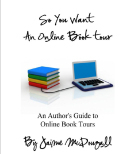Jacqui Murray's Blog, page 185
July 24, 2012
Tech Tip for Writers #67: How to Add Accents and more
 Tech Tips for Writers is an (almost) weekly post on overcoming Tech Dread. I’ll cover issues that friends, both real-time and virtual, have shared. Feel free to post a comment about a question you have. I’ll cover it in a future Tip.
Tech Tips for Writers is an (almost) weekly post on overcoming Tech Dread. I’ll cover issues that friends, both real-time and virtual, have shared. Feel free to post a comment about a question you have. I’ll cover it in a future Tip.
Q: I teach Spanish and need a quick way to add accents to words. Can you help?
A: You can go through the symbols library, but there’s an easier way. Use the Ctrl key + the accent. Here is a table:

Keyboard shortcuts for accents, etc.
You probably always wondered what that key was to the left of the ’1′, under the tilde. That’s for accent marks.
Questions you want answered? Email me at askatechteacher@structuredlearning.net and I’ll answer it within the next thirty days.

Jacqui Murray is the editor of a technology curriculum for K-sixth grade, creator of two technology training books for middle school and four ebooks on technology in education. She is the author of Building a Midshipman , the story of her daughter’s journey from high school to United States Naval Academy. She is webmaster for six blogs, an Amazon Vine Voice book reviewer, a columnist for Examiner.com , Editorial Review Board member for Journal for Computing Teachers, Cisco guest blog, IMS tech expert, and a bi-weekly contributor to Write Anything. Currently, she’s editing a thriller for her agent that should be out to publishers this summer. Contact Jacqui at her writing office or her tech lab, Ask a Tech Teacher.
Filed under: tech tips for writers Tagged: tech tips, writers tips

July 23, 2012
Writers Tips #102: 10 Tips from the Careful Writer
 When you read your story, does it sound off, maybe you can’t quite put your finger on it, but you know you’ve done something wrong? Sometimes–maybe even lots of times–there are simple fixes. These writer’s tips will come at you once a week, giving you plenty of time to go through your story and make the adjustments.
When you read your story, does it sound off, maybe you can’t quite put your finger on it, but you know you’ve done something wrong? Sometimes–maybe even lots of times–there are simple fixes. These writer’s tips will come at you once a week, giving you plenty of time to go through your story and make the adjustments.
Theodore Bernstein’s fifty-year-old, 512-page The Careful Writer: A Modern Guide to English Usage (the Free Press, 1963) and its more than 2000 problem-solving entries has some of the best tips you’ll need if you’re serious about becoming a writer. Bernstein, former consulting editor of the New York Times, wrote/co-wrote seven books on writing, but this one–in my estimation–is his best. The font styles are old; the archaic structure of its syntax at times made me chuckle; and the topic is as appealing as banana juice (though I understand our Army boys in Kuwait love it–they can’t keep it stocked), but it has stood the test of time and writers should consider it a must-have for their reference library. Where else will you go with a question like, Is ‘none’ singular or plural? It doesn’t hurt that Bernstein schools us-readers with a dry sense of humor, making the medicine more palatable.
A little about Theodore Bernstein (November 17, 1904 – June 1979). He was an assistant managing editor of The New York Times and from 1925 to 1950 a professor at the Columbia University School of Journalism. When he died, Time Magazine wrote an obit bio on him that read like this:
Back in the old days, a brilliant editor of The New York Times named Theodore M. Bernstein was also a professor at Columbia J School. After he died in 1979, Time Magazine noted, “Theodore M. Bernstein, 74…served as the paper‘s prose polisher and syntax surgeon for almost five decades, authoring seven popular texts on English usage and journalism…In a witty Times house organ called ‘Winners and Sinners’, the shirtsleeves vigilante caught solecists in the act.”
Bernstein would have objected to their neologistic use of ‘author’ as a verb. Today, no one would even notice.
Besides covering basic good grammar, Bernstein addresses the idiomatic words that are more difficult to classify and covers them with the same rigor as he does the traditional words.
Here are some of his best tips:
accident vs. mishap: accident is an undesigned occurrence. Mishap is an unfortunate happening.
amid vs. amidst–Americans prefer amid; Brits prefer amidst
can vs. may: use can for ability or power to do something, may for permission to do it
elder vs. older: older compares old things whereas elder compares people
he has lots of slang-type of phrases--guild the lilly, likes of, pinch hitter (which he terms a ‘weary cliche’), some of which have since 1963 become mainstream. American English is nothing if not adaptive.
hanker takes the preposition after or for
hara-kiri–the correct word for the more popular term, ‘hari-kari’ and not a correct substitute for the Japanese ritual suicide, seppuku
how come: out of place in good writing and not legitimized because Shakespeare used the term ‘how chance’
incidental: takes preposition to or upon
libel vs. slander: slander is oral defamation while libel is defamation by any other means
like vs. as: Bernstein takes three pages–filled with humorous examples–to explain the use of these two words
madam vs. madame: one is a married woman; the other the keeper of a bawdy house
may vs. might: may is present tense; might is past tense–who knew that?
mixaphor–when a writer mixes his metaphors. I love this.
pupil vs. student: those who attend elementary schools are pupils; those who attend higher institutions of learning are students (again, who knew? In this case, probably more of a history lesson than followed)
sensual vs. sensuous: sensual applies to gratification of the animal sense with overtones of lewdness; sensuous applies to enjoyment produced by appeal to the senses.
though vs. although: mean the same with two exceptions: 1) only though can be used in idioms like ‘as though’, and 2) only though can be used adverbially in a final position
If you are in a position where you must–really must–be accurate in your grammatical decisions, there is no better authoritative source than Bernstein. Others may have an educated opinion, but Bernstein is the trump card.
Jacqui Murray is the editor of a technology curriculum for K-sixth grade, creator of two technology training books for middle school and four ebooks on technology in education. She is the author of Building a Midshipman , the story of her daughter’s journey from high school to United States Naval Academy. She is webmaster for six blogs, an Amazon Vine Voice book reviewer, a columnist for Examiner.com , Editorial Review Board member for Journal for Computing Teachers, Cisco guest blog, IMS tech expert, and a bi-weekly contributor to Write Anything. Currently, she’s editing a thriller for her agent that should be out to publishers next summer. Contact Jacqui at her writing office or her tech lab, Ask a Tech Teacher.
Filed under: book reviews Tagged: book review, grammar, writers tips

July 20, 2012
Book Review: So You Want an Online Book Tour
 When Jaime McDougall’s So You want an Online Book Tour: An Author’s Guide to Online Book Tours (Smashwords 2012) was offered to Write Anything for review (I write several articles a month for this writer’s community), I grabbed it. I tried a book tour (also called a ‘virtual book tour’) a few years ago that didn’t go well. I put a lot of work into it, but was matched up with all sorts of genres that had nothing to do with thrillers, did my part visiting blogs to answer non-existent comments, and posted a few books for others on my blog–only to have them not even drop by.
When Jaime McDougall’s So You want an Online Book Tour: An Author’s Guide to Online Book Tours (Smashwords 2012) was offered to Write Anything for review (I write several articles a month for this writer’s community), I grabbed it. I tried a book tour (also called a ‘virtual book tour’) a few years ago that didn’t go well. I put a lot of work into it, but was matched up with all sorts of genres that had nothing to do with thrillers, did my part visiting blogs to answer non-existent comments, and posted a few books for others on my blog–only to have them not even drop by.
I felt burned, but heard good reports from others (for example, my e-buddy Cat over at Cafe Girl Chronicles) so figured I’d done the process wrong. This book promised to tell me the right way to do it. Ms. McDougall runs an online marketing business (which arranges online book tours). If anyone knows the right way to do it, it should be her. McDougall is an Australian writer–though her bio calls her a ‘citizen of the world’ who has written for a variety of journalistic outlets, and now her second ebook (the first, So You Want to Write A Guest Post). I like that she picks topics that are most challenging to writers as we try everything to market our work in the wide wild world of the internet.
Let me step back for those who don’t know what an online book tour is. According to Jaime McDougall:
An online book tour is a marketing tool that involves ‘stops’ at various blogs for a set amount of time. Think of it like a traditional tour that takes place online. A single guest post on a blog is not a ‘tour’; dozens of tour stops on a single day is a tour. It’s all about multiple appearances.
I have done a lot of book reviews. I publish three-four a month on my own blog, WordDreams. I write four a month for Amazon as a Vine Voice. I’ve gotten used to looking for the meat on the bone. It was a pleasure to find an author who didn’t feel like she had to write a hundred pages on a topic that could be covered in thirty. Truth, McDougall uses six pages for introductory chatting, so the meat starts at Page 7.
Here are some more observations about McDougall’s pithy book:
She explains the variety of posts that can be included in a book tour–everything from an interview to a book review. That fits what I had on my book tour–a little of everything
She explains the varieties of book tours–from all-in-one-day to extended. Mine was weeks–a huge, long, never-ending commitment I tired of when I realized I was getting no return for my money. I’d opt for a Blast next time.
She explains the variety in online book companies
She takes you through what happens once you sign up
She provides a check list of comparisons to use when evaluating companies
She discusses media kits–important to online book tours
She shares ideas on how to prepare for and manage a book tour
She reminds writers to stop by the tour blogs. I can attest to the fact that this requires a mention. I’ve hosted guest articles expecting collaboration only to be surprised they never came over to answer comments.
She includes a list of blog tour companies.
I was surprised she warns that authors have no say in where their book was placed. No wonder my thriller ended up in erotica. I have been told by other writer friends who did book tours that they were able to select their genre. McDougall covers this by discussing genre-specific companies.
Another point that surprised me was a recommendation that authors seek reviewers from people they don’t know. I get this a lot because of my connection with Vine Voice, my publishing record, and the variety of blogs/ezines I write for, and I rarely agree. To review someone’s book is a huge commitment in time and energy. I always have one or two projects I’m working on, and several in the pipeline. I’ve done it for friends and they return the favor, but to say yes to an unsolicited request–well, that’s not going to happen. The fact that McDougall includes it in her book…
Hello Blogger X!
I came across your blog – The X Blog – and I thought you might be interested in reviewing my book…
…must mean there are a lot of open-minded readers out there who don’t share my self-centered opinion on reviews. Who are you? Are you authors? Writers? Good-hearted souls? Would you review my book?
Having said that, I DID agree to review her book for Write Anything. Maybe it’s more effective than I give it credit for.
Overall, a worthwhile book that won’t take much of your time to read. Buy it as a resource for when you morph from writer to marketer.
Jacqui Murray is the editor of a technology curriculum for K-sixth grade, creator of two technology training books for middle school and three ebooks on technology in education. She is the author of Building a Midshipman , the story of her daughter’s journey from high school to United States Naval Academy midshipman. She is webmaster for six blogs, an Amazon Vine Voice book reviewer, a columnist for Examiner.com , Editorial Review Board member for Journal for Computing Teachers, IMS tech expert, and a weekly contributor to Write Anything. Currently, she’s editing a thriller for her agent that should be out to publishers this summer. Contact Jacqui at her writing office or her tech lab, Ask a Tech Teacher.
Filed under: book reviews, marketing Tagged: book review, online book tour, virtual book tour


July 19, 2012
10 Tips Guaranteed to Rescue Your Story
When you read your story, is it underwhelming? Are you bored and you’re the author? In the excitement of getting your story on

The eleventh tip: Just do it
paper, developing your characters and moving through the plot, have you missed whatever it is that makes a story worth reading.
I know what the problem is: It’s the basics.
You’ve forgotten the nuts and bolts. Here are ten of them, each designed to address the most fixable parts of your story. Once you’ve edited with these in mind, re-read your story. You’ll find a huge difference. If you don’t, and only if you don’t, read the last paragraph:
The story is too passive. Check for how often you use a derivation of the verb, to be. That would include was, is, were, etc. Limit them to five per page. They take the umph out of your story. Choose a more active verb. Sometimes it’s as simple as switching She was thinking to She thought . Sometimes it takes more time. Doesn’t matter if it takes a while. It’ll fix your story
More dialogue. Less narrative. Dialogue is active. Narrative is passive. Dialogue pulls the reader into the action. Narrative lets them sit outside where it’s nice and safe. You want your reader to feel the plot’s danger, not feel insulated. You’ve probably heard writing professors intone, Show, not tell. This is what they mean. Dialogue shows. It’s in scene. Narrative tells. It’s outside of the scene.
Don’t jump around in POVs so often. Once a chapter only. At the most, between paragraphs (I stick with a full scene for each POV). You’re reader wants to get to know the POV character and wonder about events with them, not jump into someone else’s head to find out the answers. Mystery is good. No mystery is boring.
Your protagonist isn’t likable. People want to like the main character. They want to relate to that person. Your main character shouldn’t be perfect. S/he should have foibles, failures like every person on the planet. Just don’t make them dis-likable.
Add detail. Be specific about the restaurant your characters eat at, the town they visit, the types of dogs in the dog park. Your readers will relate to the details. Specifics pull readers in. Generalities leave them outside the plot, wondering if they want to commit.
Fix your grammar and spelling. Everyone won’t catch every error, but most people will catch some of the errors. If they catch more than a few–and I use that term loosely–you’ve lost your credibility. Catch as many as you can before you even show the mss to your writer’s group. Don’t assume your future agent will fix grammar and spelling. S/he won’t see the plot for the errors.
Your characters must grow. They can’t remain static from the beginning of the novel to the end. There’s something about a trial by fire and coming out better that snares readers. Look at each character. Where did they start? Where did they end? Have they grown? If not, fix it.
Vary your sentence length. Long involved sentences slow the story down. Short snappy sentences speed the action up. Make sure you use each type in the correct spot.
Use picture nouns and action verbs. Every noun should evoke an entire picture in your reader’s mind. Every verb should set off a sequence of actions.
Limit adjectives and adverbs. Replace a multi-adjectived noun with a fully-developed picture noun. Replace an over-adverbed verb with a descriptive verb. A rule of thumb is no more than two adjectives per noun and no more than five adverbs per page.
If these ten tips didn’t fix things for you, well, now you have to enter the murky land of intangible tips. Things like…
Put passion in your writing
Write what you know
Be unique and unpredictable
I know–these last are important, maybe the most important. But, you have to agree, they’re a lot harder to fix. I like to start at the beginning and proceed to the end. Keep my editing as simple as possible until I can’t.
What are your hints?
Click for more about dialogue.
Jacqui Murray is the editor of a technology curriculum for K-sixth grade, creator of two technology training books for middle school and four ebooks on technology in education. She is the author of Building a Midshipman , the story of her daughter’s journey from high school to United States Naval Academy. She is webmaster for six blogs, an Amazon Vine Voice book reviewer, a columnist for Examiner.com , Editorial Review Board member for Journal for Computing Teachers, Cisco guest blog, IMS tech expert, and a bi-weekly contributor to Write Anything. Currently, she’s editing a thriller for her agent that should be out to publishers this summer. Contact Jacqui at her writing office or her tech lab, Ask a Tech Teacher.
Filed under: characters, dialogue, editing, pov, writers, writers tips, writing Tagged: dialogue, narrative, rescue your story, show not tell, writers, writers tips

July 17, 2012
Tech Tip for Writers #66: Zoom In/Out of Websites
 Tech Tips for Writers is an (almost) weekly post on overcoming Tech Dread. I’ll cover issues that friends, both real-time and virtual, have shared. Feel free to post a comment about a question you have. I’ll cover it in a future Tip.
Tech Tips for Writers is an (almost) weekly post on overcoming Tech Dread. I’ll cover issues that friends, both real-time and virtual, have shared. Feel free to post a comment about a question you have. I’ll cover it in a future Tip.
Q:
I can’t read the internet page. How do I zoom out of a browser window?
A: There are a few ways, but here’s one I always forget about–and it’s the simplest of all: hold down the “Ctrl” key and move your “mouse scroll wheel”. One direction zooms in; the other zooms out.
There are two other ways:
Ctrl+ (the plus sign next to backspace) will zoom in one step at a time; Ctrl- will do the same zooming out
Go to the menu bar. Select ‘View’, ‘Zoom’ and either ‘Zoom in’ or ‘Zoom out’
To return to the original setting, hold down the “CTRL” key and hit the number zero.
Take a moment while I get a cup of coffee and try it… OK–how’d it go?
Questions you want answered? Email me at askatechteacher@structuredlearning.net and I’ll answer it within the next thirty days.

Jacqui Murray is the editor of a technology curriculum for K-sixth grade, creator of two technology training books for middle school and four ebooks on technology in education. She is the author of Building a Midshipman , the story of her daughter’s journey from high school to United States Naval Academy. She is webmaster for six blogs, an Amazon Vine Voice book reviewer, a columnist for Examiner.com , Editorial Review Board member for Journal for Computing Teachers, Cisco guest blog, IMS tech expert, and a bi-weekly contributor to Write Anything. Currently, she’s editing a thriller for her agent that should be out to publishers this summer. Contact Jacqui at her writing office or her tech lab, Ask a Tech Teacher.
Filed under: tech tips for writers Tagged: tech tips, websites, writers tips

July 16, 2012
Writer’s Tip #16: Use all Five Senses
 When you read your story, does it sound off, maybe you can’t quite put your finger on it, but you know you’ve done something wrong? Sometimes–maybe even lots of times–there are simple fixes. These writer’s tips will come at you once a week, giving you plenty of time to go through your story and make the adjustments.
When you read your story, does it sound off, maybe you can’t quite put your finger on it, but you know you’ve done something wrong? Sometimes–maybe even lots of times–there are simple fixes. These writer’s tips will come at you once a week, giving you plenty of time to go through your story and make the adjustments.
Today’s tip: Go beyond the visual in your story.
When you’ve finished your first draft, check to be sure you’ve added scents, tastes, tactile details, as well as sight and sound. That’s how people experience the world. That’s also how we communicate with others–facial expressions, body language, perfume. You get the idea. Your story won’t sound realistic unless your characters use all of them to tell their story.
Please add comments with your favorite editing fixes.
To have these tips delivered to your email, click here.

Jacqui Murray is the editor of a technology curriculum for K-sixth grade, creator of two technology training books for middle school and four ebooks on technology in education. She is the author of Building a Midshipman , the story of her daughter’s journey from high school to United States Naval Academy. She is webmaster for six blogs, an Amazon Vine Voice book reviewer, a columnist for Examiner.com , Editorial Review Board member for Journal for Computing Teachers, Cisco guest blog, IMS tech expert, and a bi-weekly contributor to Write Anything. Currently, she’s editing a thriller for her agent that should be out to publishers this summer. Contact Jacqui at her writing office or her tech lab, Ask a Tech Teacher.
Filed under: writers tips Tagged: plot, writers tips

July 12, 2012
30 Essential Books for Every Writer
Every writer I know has a bookshelf full of books they’ve purchased to help inspire the writing process. In my case, I

Photo credit: Hubpages
have so many, I’ve pretty much lost track of them.
Except for those that I can’t write without. In my office, I have my computer table, an oak rolltop desk close enough my left elbow bumps it when I really get going on the keyboard and behind me, about two feet away, a floor-to-ceiling bookshelf of reference books. Those books are constantly ibn motion. I pull them out by piles, stack them on my desk and riffle through them to augment partikcular parts of my stories. Sometimes, I’m looking for facts on nature, animals, buildings. Other times, I’m working through some prickly syntax. Either way, there are those books I can’t write without.
Here’s my list. Read through it. Tell me what your list looks like:
Bill Bryson’s Dictionary for Writers and Editors, by Bill Bryson
Blockbuster Plots: Pure and Simple, by Martha Alderson
Careful Writer: A Modern Guide to English Usage, by Theodore Bernstein
Creating Character Emotions: Writing compelling fresh approaches that express your characters’ true feelings, by Ann Hood
Elements of Style by EB White
First Five Pages: A Writer’s Guide to Staying Out of the Rejection Pile, by Noah Lukeman
Garner’s Modern American Usage, by Bryon Garner
How to Write A D*** Good Novel, by James Frey
Lexicon, by William F. Buckley Jr.
Marshall Plan for Novel Writing: A 16-step program guaranteed to take you from idea to completed manuscript, by Evan Marshall
National Audubon Society Field Guide
New York Times Practical Guide to Practically Everything
New York Times Guide to Essential Knowledge
Novel Writer’s Toolkit: A guide to writing great fiction and getting it published, by Bob Mayer
Oxford American Writer’s Thesaurus
Oxford Book of Aphorisms, by John Gross
Oxford Concise Dictionary of English Etymology
Oxford Dictionary of Difficult Words
Penguin Dictionary of Epigrams, by MJ Cohen
Please Understand Me II: Temperament, Character, Intelligence, by David Keirsey
Roget’s 21st Century Thesaurus
Self-Editing for Fiction Writers, by Renni Browne
Synonym Finder, by J. I. Rodale
Webster Dictionary
Writer’s Coach: An Editor’s Guide to Words That Work, by Jack Hart
Writer’s Guide to Character Traits, by Linda Edelstein
Writing from A to Z, by Sally Ebest
Writing the Blockbuster Novel , by Albert Zuckerman
Writing Fiction: A Guide to Narrative Craft , by Janet Burroway
Writing the Breakout Novel: Insider advice for taking your fiction to the next level , by Donald Maass
Writing the Novel from Plot to Print, by Lawrence Block
The links are to book reviews I’ve done. It’ll be a while before I complete the entire list.
I’d love to hear your list.
Jacqui Murray is the editor of a technology curriculum for K-sixth grade, creator of two technology training books for middle school and four ebooks on technology in education. She is the author of Building a Midshipman , the story of her daughter’s journey from high school to United States Naval Academy. She is webmaster for six blogs, an Amazon Vine Voice book reviewer, a columnist for Examiner.com , Editorial Review Board member for Journal for Computing Teachers, Cisco guest blog, IMS tech expert, and a bi-weekly contributor to Write Anything. Currently, she’s editing a thriller for her agent that should be out to publishers this summer. Contact Jacqui at her writing office or her tech lab, Ask a Tech Teacher.
Filed under: authors, book reviews, homeschool, words, writers resources, writing Tagged: books for writers, writers resources, writers toolkit

Why I Don’t Get Writers Block

Writer’s block got you down? Try this.
I know the popular lore is every author gets writer’s block–that frozen brain that blocks all efforts to put two words together, much less three. It’s that underlying conspiracy that would make the 9/11 Truthers proud.
Not true for me. My problem is too many things to write about. It might even be considered a focus problem. When I sit down to write, my brain skitters like a stone across the surface of a lake.
Truth, I find writing strenuous. Always thinking through someone else’s head (my character). Living in a virtual world where stuff happens that I’d never face in real life. There are a couple of things I do about that:
I start with a solid outline. I go through it like a nit picker, to be sure I include all the steps, transitions, plot twists. Is there logic in what’s happening? Or dislogic where required? My outline covers only plot, but it must integrate each character’s traits so it becomes their actions and reactions. If I get stuck writing the outline, I force my size ten feet into my character’s shoes: I sit back, stare at something far off beyond the confines of my property line and invoke that imagination the world has relentlessly tried to drum from my cerebral skillset. What would my character smell, feel, as she’s walking the corridors at 10pm on a moonless windy night? Stale food? Cigarette smoke? I’m thinking she’d be frightened, all alone, footsteps echoing off the bare walls.
I also start with a solid character fact list. I put everything down about the character that I would know if it was me–background, history, past traumas, foibles, passions, speech quirks, what drives them, their strengths and weaknesses, what their typical day would be, their part in the story, etc. I need to know them as I know myself.
After the character fact list, after the outline, while I’m struggling through the Writing, I pay attention to Point of View. Sometimes, I realize I’m writing a narrative, not the believable story of a single mom with money problems whose computer is being hacked by terrorists. I back up, find the spot I fell out of character and start over. Some people can work in an omniscient Point of View, but I can’t get involved enough in the story unless I’m in my character’s head. I have to think like her/him, feel as they do so I can write their parts authentically. This-all takes a long time, but along the way, I get a better understanding of my story. I believe it’s a significant reasons why I don’t get writer’s block. It’s also the reason why many good writers say the story “just unfolded” for them. Well, it did, because it was real.
If my imagination takes me somewhere I know nothing about, I…
Research. God I love the internet. If I’m trying to imagine what the Hudson River smells like in summer, Google has an answer. People blog about stuff like that! In this case, it was an efriend. If I’m wondering what stores I’d pass walking down Amsterdam in New York, Google Streetview takes me right there. It took me to the front of my character’s apartment (which turned out to be a factory, so I had to move it–thank you Streetview)
If you find the traditional cures like these four don’t work:
How to Fix Writers Block
Writer’s Block is a Form of Torture
Overcoming Writer’s Block
Writers Block 911
…try mine.
Jacqui Murray is the editor of a technology curriculum for K-sixth grade, creator of two technology training books for middle school and four ebooks on technology in education. She is the author of Building a Midshipman , the story of her daughter’s journey from high school to United States Naval Academy. She is webmaster for six blogs, an Amazon Vine Voice book reviewer, a columnist for Examiner.com , Editorial Review Board member for Journal for Computing Teachers, Cisco guest blog, IMS tech expert, and a bi-weekly contributor to Write Anything. Currently, she’s editing a thriller for her agent that should be out to publishers this summer. Contact Jacqui at her writing office or her tech lab, Ask a Tech Teacher.
Filed under: writers resources, writing Tagged: writers, writers block








July 11, 2012
Check out my Article Over at Write Anything
I have an interesting article on my greatest triumph (with a twist) over on Write Anything. If you can’t make it–no worries. I’ll post it here soon.
______________________________________________________________________________________________
Jacqui Murray is the editor of a technology curriculum for K-sixth grade, creator of two technology training books for middle school and three ebooks on technology in education. She is the author of Building a Midshipman , the story of her daughter’s journey from high school to United States Naval Academy. She is webmaster for six blogs, an Amazon Vine Voice book reviewer, a columnist for Examiner.com , Editorial Review Board member for Journal for Computing Teachers, Cisco guest blogger, IMS tech expert, and a weekly contributor to Write Anything. Currently, she’s editing a thriller for her agent that should be out to publishers this summer. Contact Jacqui at her writing office or her tech lab, Ask a Tech Teacher.
Filed under: blogs, writers Tagged: guest post








July 10, 2012
Tech Tip for Writers #65: Google Street View
 Tech Tips for Writers is an (almost) weekly post on overcoming Tech Dread. I’ll cover issues that friends, both real-time and virtual, have shared. Feel free to post a comment about a question you have. I’ll cover it in a future Tip.
Tech Tips for Writers is an (almost) weekly post on overcoming Tech Dread. I’ll cover issues that friends, both real-time and virtual, have shared. Feel free to post a comment about a question you have. I’ll cover it in a future Tip.
Q: I can’t find enough detail about a particular area of the world my character visits. Any suggestions?
A: Try Google Street View. It’s a wonderful way to explore settings for your writing Here’s how to use it:
First, you must have Google Earth. It’s a free download and I’ve never had problems with the install. Take a minute to do that. I’ll wait.
Done? Good. That was fast. Here’s what you do next:
[image error]
[image error]
[image error]
When I went to visit the house my character was living in, I found out I had to rework several important pieces of the story. I had her walking to work, not realizing how crowded both streets and sidewalks were with traffic. She’d have to be a bit more careful with the cup of coffee, briefcase, and bowl of oatmeal she was juggling as she traveled. And, where I had her passing generic-sorts of stores (Starbucks, local grocery), umm, there were problems. The ones I mentioned weren’t there, and I’d failed to mention a few eclectic ethnic stores that could provide the essential detail that makes a setting come to life.
A note: Google Street View even covers hiking trails.
For more information, click here.
Questions you want answered? Email me at askatechteacher@structuredlearning.net and I’ll answer it within the next thirty days.

Jacqui Murray is the editor of a technology curriculum for K-sixth grade, creator of two technology training books for middle school and four ebooks on technology in education. She is the author of Building a Midshipman , the story of her daughter’s journey from high school to United States Naval Academy. She is webmaster for six blogs, an Amazon Vine Voice book reviewer, a columnist for Examiner.com , Editorial Review Board member for Journal for Computing Teachers, Cisco guest blog, IMS tech expert, and a bi-weekly contributor to Write Anything. Currently, she’s editing a thriller for her agent that should be out to publishers this summer. Contact Jacqui at her writing office or her tech lab, Ask a Tech Teacher.
Filed under: characters, setting, tech tips for writers, writers resources Tagged: characters, Google Earth, google street view, setting, writers resources











